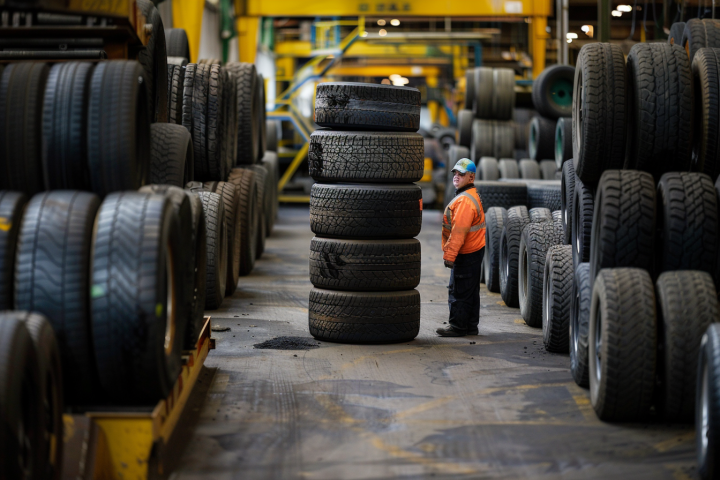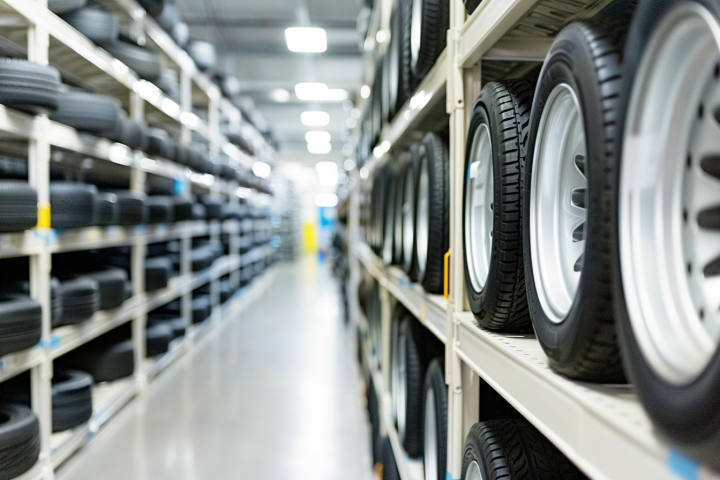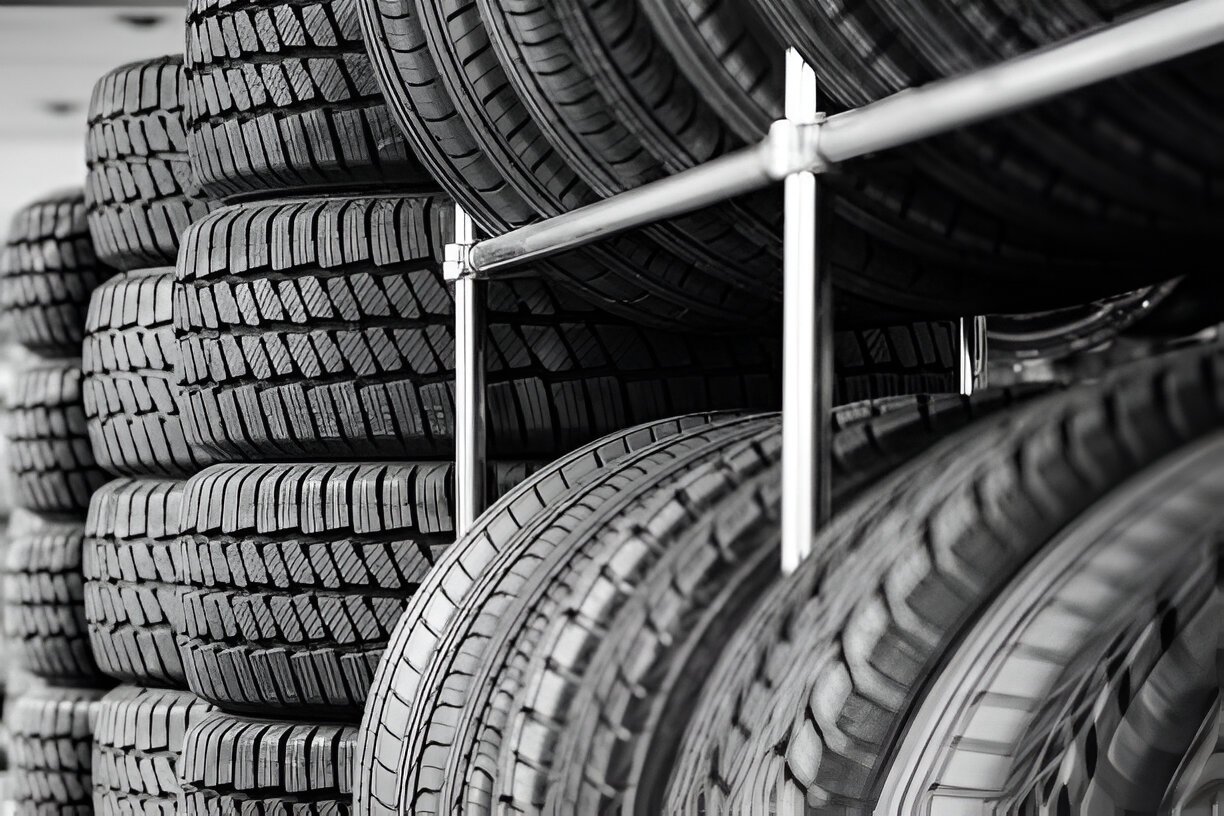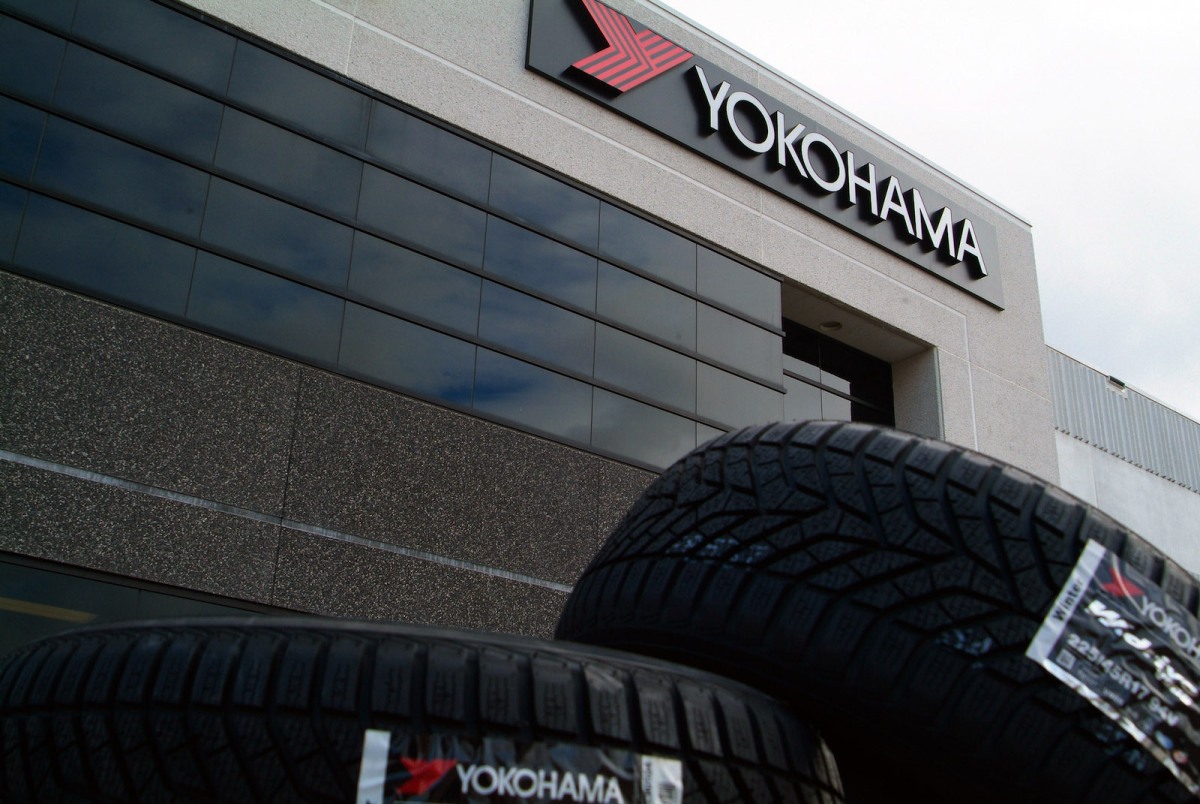Last Updated on July 27, 2025
Understanding Rising Costs: Factors Driving Up Tire Prices
Tire price inflation has become a severe concern in the dynamic automotive economics and maintenance sectors. This trend, driven by a complex interaction of raw material costs, technological advancements, and global market pressures, has gradually increased tire prices. Understanding the details of tire price inflation is vital for consumers, industry players, and policymakers. The introduction sheds light on the key factors driving this trend, providing insights into tire market dynamics’ current and future implications.
The Current Landscape of Tire Pricing
In recent years, tire prices have significantly increased, which can be attributed to a combination of reasons from inside and outside the tire business. Tire costs have gradually increased in line with general Inflation and market expansion. The contemporary environment, nevertheless, is very different. The leading causes of this change are rising labor, raw materials, and transportation costs, which are made worse by environmental rules and demands from the world economy.
Rubber, steel, and petroleum-based products are raw materials whose prices have fluctuated and are crucial to the tire industry. For example, weather patterns that affect rubber plantations can cause variations in the rubber market, and petroleum prices directly affect the cost of synthetic rubber and other tire components. Furthermore, the global shift towards more environmentally friendly manufacturing techniques and materials has increased research and adaptation expenses.
Labor expenses are a significant additional factor. Wag’s rise in parallel Wag tight labor markets and developing economies affect tire production costs. The cost hikes are also due to advancements in tire technology, which aim to improve longevity, safety, and fuel efficiency. These technological developments benefit the user but come at a great expense regarding research and development.
Importance of Understanding Tire Inflation
Policymakers, car makers, and consumers must understand why tire prices are rising. Price, quality, and longevity are all factors to consider; this information allows buyers to make informed tire-buying choices. It also helps budget for auto maintenance, an essential part of car ownership.
Policymakers can also benefit from this knowledge, as it helps them make decisions concerning trade restrictions, environmental legislation, and economic policies that affect the tire business. Understanding the factors influencing tire costs allows them to create more effective policies that balance industry objectives, customer wants, and environmental considerations.
Today’s tire pricing is affected by a complex web of factors, including labor costs, raw material costs, technological advancements, and global economic situations. To respond effectively, policymakers, corporations, and consumers must know the tire industry’s potential and problems. This knowledge aids in predicting future trends, making the proper preparations, and making informed choices.
Historical Context of Tire Prices
The history of tire manufacturing and pricing is a fantastic journey that shows the evolution of transportation and technological innovation. Understanding this history provides valuable context for the current trends in tire pricing.
A Brief History of Tire Manufacturing and Pricing
Modern tire production originated in the late nineteenth century. The first pneumatic tire, patented by John Boyd Dunlop in 1888, was a game changer. Initially designed for bicycles, tires became common in automobiles in the early twentieth century.
The early tires were simple, inexpensive, and made of solid rubber. B.F., BB.F. G.B. Frich introduced carbon black in 1910, significantly improving tire performance and longevity while marginally increasing production costs. However, the tires were not long-lasting and had to be replaced regularly.
Due to a lack of natural rubber during the war, synthetic rubber was introduced in the 1940s. The discovery greatly impacted the tire industry due to its enhanced supply and price consistency. Due to World War II, the tire industry expanded faster than the automotive industry, resulting in mass manufacturing and lower pricing.
The introduction of radial tires in the 1970s and 1980s marked additional developments, providing longer life and higher fuel efficiency. However, these advances resulted in more significant production costs, reflected in tire pricing.
Comparing Past and Present Price Trends
Comparing historical and present data reveals a significant shift in tire pricing trends. Function was placed first over performance in the early days of the tire industry, and there weren’t many options. Due to reduced production and material costs, prices were often low.
In contrast, today’s tire market is known for its various products catering to vehicles and driving conditions. Innovations such as run-flat tires, improved tread patterns for different terrains, and advanced rubber compounds for better performance and durability have increased production costs and retail prices.
The tire industry’s globalization is another aspect influencing the present price trends. Until now, tire supply chains and manufacturing were more regionally focused. In the current global market, tire prices are significantly impacted by variables, including tariffs, the cost of international transportation, and global changes in the price of raw materials.
Environmental regulations and the need for sustainable production have also driven up costs. Although eco-friendly materials and processes benefit the environment, modern tire manufacturers must pay more to create their products.
The history of tire prices shows the evolution of the tire business from its humble beginnings to a sophisticated, technologically advanced sector. Nat rally, there have been price rises due to the shift from simple, low-cost tires to various high-performance products.
This historical perspective is crucial in understanding current pricing trends and anticipating future developments in the tire industry.
Raw Material Costs and Tire Prices
Tire pricing is directly tied to the costs of raw materials used in production. Understanding tire price changes requires a deeper understanding of these materials and the impact of market dynamics on them.
Key Raw Materials for Tire Production
Tire production is a complex process that uses a variety of raw materials. The key components are:
- Natural Rubber: Natural rubber is derived from rubber trees and is commonly found in tire treads and sidewalls. It provides the required suppleness and flexibility for tires.
- Synthetic Rubber: Synthetic rubber complements natural rubber in tire manufacturing by reusing petroleum industry waste. It has exceptional aging and wear qualities essential to the tire’s lifespan.
- Carbon Black: A type of soot, this substance gives tires their black color and boosts their strength and longevity. It increases the tire’s ability to withstand abrasion.
- Steel: This material in steel belts helps distribute the car’s weight evenly and strengthens the tire’s structure.
- Chemicals and Additives: Various chemicals improve tires’ properties, such as resistance to ultraviolet light, Ultraviolet Eat, and ozone. E-additives play a critical role in enhancing tire performance and lifespan.
Impact of Raw Material Scarcity and Price Volatility
The raw material market’s instability significantly affects the tire business. There are several reasons for this:
- Dynamics of Supply and Demand: The production of natural rubber, for example, is influenced by agricultural weather, diseases that impact rubber trees, and political unrest in the nations that produce rubber.
- Oil Prices: The price of synthetic rubber is directly related to oil because it is a petroleum product. Changes in the world oil market significantly affect the cost of synthetic rubber.
- Environmental Factors: The need for environmentally friendly materials in tire production grows as society shifts to more sustainable methods. However, these materials are frequently more expensive because of their restricted supply and increased production costs.
- Global Trade Policies: Tariffs and trade issues can also affect the availability and cost of raw materials. Changes in trade policies can lead to sudden increases in the price of importing these materials.
The price of tires is significantly influenced by the cost of the raw materials used in their production. The volatility and scarcity of these materials, driven by various global factors, play a pivotal role in fluctuating tire prices. Understanding these dynamics is critical for consumers and manufacturers to navigate the market and make informed decisions.
Manufacturing and Technological Advances
The tire industry has seen significant changes throughout the years due to technological advancements and improvements in production techniques. These advancements have increased tire quality and affected tire prices.
Innovation in Manufacturing
This blog discusses the most recent advances and technologies transforming the tire industry. It shows how tire makers are pushing the boundaries of technology to create safer, more efficient, and ecologically friendly tires. They achieve this through the use of sustainable materials and innovative manufacturing processes.
- Automated Manufacturing: With powerful robots and accurate engineering, tire production has recently become increasingly automated. The transition away from labor-intensive procedures has improved manufacturing efficiency and uniformity.
- Advanced Substances: The employment of new materials, such as silica-infused rubber compounds, has enhanced tire grip, fuel efficiency, and wear resistance. Despite the higher expense, these materials improve tire safety and durability.
- Better Design Methods: Computational modeling and simulation technologies enable manufacturers to build tires with the best potential tread patterns and structures. As a result, the tires have a longer lifespan, lower noise, and better handling.
- Green technologies: The industry also embraces eco-friendly innovations, such as using recycled materials and developing tires with low rolling resistance, which use less fuel and release fewer greenhouse gases.
- Smart Tire Technologies: The addition of sensors and Internet of Things (IoT) technologies to tires is a recent achievement in tire technology. The e “smart tires” can increase longevity and safety by monitoring characteristics like tread wear and air pressure.
How Technology Enhances Quality and Affects Prices
The following developments in technology have two effects on tire quality and cost:
- Improved Safety and Performance: Thanks to technological developments, current tires perform better in various driving conditions. Introducing features such as enhanced grip and shorter stopping distances can also improve safety.
- Extended Life: Because of innovations in design and materials, today’s tires frequently last longer than those of the past. Their longer lifespan may offset the increased initial cost of advanced tires.
- Higher Production Costs: One disadvantage of these technological advancements is that they increase the cost of production. Intelligent technologies, complicated manufacturing procedures, and new materials raise tire production costs.
- Pricing Impact: These increased production costs are also shown in the retail price of tires. At the same time, consumers benefit from higher quality and enhanced safety but face higher prices.
Global Economic Factors Influencing Prices
Global economic difficulties affect the tire industry and many other businesses. Elements, which might range from international trade mechanics to financial crises, all significantly influence tire prices globally.
The Functions of Tariffs and International Trade
“The Role of International Trade and Tariffs” looks deeply into the connected worlds of international trade and trade laws. This blog examines how global trade affects economies, industries, and nations. We also dissect the complex world of tariffs, exploring how these export and import taxes can build and damage international economic ties. Whether you’re an economist, a company entrepreneur, or simply interested in the dynamics that drive our globalized society, this blog offers valuable insights into the dynamics of international trade and tariffs’ global impact.
- Supply Chain Dependencies: The tire industry relies on a global supply network. Global sourcing is popular for raw materials such as rubber, both natural and synthetic. As a result of this global sourcing, tire prices are subject to changes in international trade rules and regulations.
- Tariffs’ Impact: Trade restrictions and tariffs directly impact tire prices. For example, taxing imported materials enhances tire manufacturers’ expenses, usually passed on to customers through increased pricing.
- Trade Claims and Agreements: Free trade agreements can reduce the cost of importing raw materials, which lowers production costs. Embargoes and trade conflicts, on the other hand, have the potential to break supply networks, resulting in shortages and higher prices.

Economic Crises and Their Impact on the Tire Industry
We will examine the impact of economic crises on the tire sector. This blog discusses how economic downturns and financial instability can majorly affect elements such as demand, production, price, and innovation in the tire industry, shedding insight into the industry’s resilience and adaptation during difficult times.
- Demand Fluctuations: Economic downturns frequently lead to lower consumer and company spending. Because decreased demand can cause market oversupply, tire manufacturers may need to adjust output or lower prices to increase demand.
- Currency Exchange Rates: Because the tire sector is globally interconnected, exchange rate changes also impact it. Glo al market pricing may be affected by higher tire export prices stemming from a stronger currency in a nation that produces tires.
- Cost of Capital: Capital costs are commonly changed during economic downturns. Increasing financing costs for tire makers may influence their production investment and drive up tire prices. This is due to higher interest rates.
- Oil Prices: Oil prices could vary significantly during an economic crisis. Changes in oil prices can directly impact tire prices because oil is a critical element of synthetic rubber and influences transportation costs.
Environmental Regulations and Sustainability Efforts
As in many other sectors, environmental rules and a shift towards sustainability rapidly shape the tire industry. The e improvements are intended to address the increased consumer demand for ecologically conscious products while following the rules.
Environmental Policies Affecting Tire Production
Examine how environmental legislation, such as rules and sustainability requirements, affects the tire industry’s operations.
- Emission Guidelines: Globally, governments enforce stricter regulations on emissions and waste generated by manufacturing facilities, including tire plants. The e-laws usually increase production costs by requiring significant investments in greener technologies and methods.
- Using Sustainable Materials: There is an increasing demand for tire makers to incorporate sustainable or recycled materials. This includes purchasing rubber from responsibly managed plantations and using recycled materials like rubber, plastics, or bio-based components in tire production.
- End-of-Life Tire Management: Environmental legislation increasingly addresses tire recycling and disposal, two aspects of tire life cycles. Recyclers are developing technologies and programs because manufacturers are being urged—and sometimes forced—to assume responsibility for their products after use.
The Shift Toward Sustainable Materials and Its Cost Implications
Learn about the business’s move to sustainable materials in tire production and the accompanying costs. This blog explores how environmentally friendly materials influence customer pricing and choices.
- Research & Development Costs: Creating innovative, sustainable materials requires significant research and development. Adapting existing materials to meet tire performance requirements requires considerable research and development, reflected in tire prices.
- Changes to Production: It can be costly to alter production lines to employ sustainable materials or to comply with new environmental regulations. This could include changing procedures, hiring new personnel, and purchasing new equipment, all of which increase the overall cost of producing tires.
- Changes in the Supply Chain: Purchasing sustainable materials may also cost more than buying traditional materials, mainly if the former are harder to come by or need special care during transit. This may raise the tire industry’s overall production costs.
- Market Differentiation: On the positive side, the shift towards sustainability can also create market differentiation opportunities for tire manufacturers. Env ornamentally-friendly tires can appeal to a growing segment of eco-conscious consumers, allowing manufacturers to command a premium price.
Market Dynamics and Consumer Behavior
Market dynamics and customer behavior affect product offerings and pricing strategies in the tire sector. Understanding these aspects reveals how and why tire costs change.
Trends in Consumer Demand for Tires
From the shift towards eco-friendly and all-season tires to the growing demand for high-performance and innovative tires, we’ll explore the latest trends driving consumer choices. Understanding these trends is crucial for tire manufacturers and consumers seeking the perfect vehicle fit.
- Increased Awareness of Tire Quality and Safety: Today’s consumers are more knowledgeable and concerned about tire quality and safety. There is an increasing need for tires with increased performance, longer life, and added safety features, including improved traction and puncture resistance.
- Specialized Tires: Specialized tires, such as all-weather, performance, and off-road tires, are becoming increasingly popular due to the wide range of vehicles and driving conditions. The variety of consumer demand forces businesses to broaden their product offerings, influencing manufacturing and pricing strategies.
- Eco-Friendly Tire Manufacturing mental concerns develop, and an increasing number of consumers are looking for tires made of sustainable materials and designed to use less fuel. This audience is willing to pay more for tires promoting their environmental values.
- Impact of Technology and Innovation: Advances in tire technology, such as intelligent tire features and enhanced rubber compositions, have created a demand for high-tech tires among consumers who value cutting-edge features in their automobiles.
How Market Competition Influences Prices
This section explains the complex relationship between market competitiveness and tire prices. We will examine how competition between tire makers and merchants influences pricing tactics. Whether it’s price wars, promotional initiatives, or innovations driving competitive advantage, this blog will shed light on the market factors influencing tire pricing. Understanding these characteristics can help customers make more educated selections and businesses compete in a crowded market.
- Competitive Pricing Strategies: In a market with many tire manufacturers and brands, competitive pricing is essential. Companies frequently modify prices to target specific market segments, compete, or gain market share.
- Economies of scale: Larger tire producers can benefit from economies of scale in production, lowering per-unit costs and enabling competitive pricing. Small firms may concentrate on niche markets, allowing them to charge higher fees for specialized items.
- Brand Perception and Value: Brand reputation has a significant impact on price. Premium brands frequently attract higher prices due to their perceived quality and dependability. In contrast, lesser-known or budget brands compete solely on price, luring budget-conscious customers.
- Distribution Channel: tire prices have been influenced by the growth of online selling. Online platforms frequently offer competitive pricing due to fewer overhead expenses, affecting traditional brick-and-mortar shops’ pricing methods.
- Promotions and Discounts: Sales promotions and seasonal discounts are common strategies to boost sales and manage inventory. The e-practices can temporarily alter market pricing dynamics.

Transportation and Logistic Costs
In the tire industry, logistics and transportation play a significant role in deciding how much a product will ultimately cost to reach a client. Shipping costs for finished goods and raw materials worldwide heavily influence Tir prices.
Shipping and Fuel Prices’ Effect on Tire Costs
Tire prices are primarily affected by fuel prices and transportation challenges. Variations in fuel prices can result in different transportation expenses, affecting consumers’ overall tire costs. Understanding how these components interact is critical to understanding the tire industry’s economic dynamics.
- Fuel prices: Fuel costs account for a large portion of transportation expenses. When fuel prices rise, so does the cost of shipping items such as raw materials and completed tires. As manufacturers and distributors seek to maintain profit margins, the rise in transportation costs will impact tire retail prices.
- Packaging and Handling: Tires require specific packaging to protect them from damage during transit. Pac aging materials and handling also contribute to the overall transportation cost.
Challenges in Global Supply Chains
Global supply networks in the tire sector face numerous obstacles. Natural disasters, geopolitical events, and the complexities of obtaining materials and components from several continents can significantly impact supply, pricing, and quality. Navigating these challenges means ensuring businesses and consumers maintain a stable and efficient tire supply network.
- Supply Chain Complexity: The tire supply chain is a complicated network that includes raw material suppliers, manufacturers, distributors, and retailers. Maintaining cost efficiency requires excellent chain coordination. Disruptions at any step in the supply chain might result in higher prices and delays.
- Geographical Issues: Geopolitical issues, such as political instability, trade disputes, and tariff changes in critical industrial or raw material suppliers, can affect the supply chain. Delays might result in shortages and higher prices for obtaining raw materials or exporting finished products.
- Environmental rules: As shipping and transportation rules become stricter, logistical costs can rise. Compliance with these restrictions often necessitates spending more on cleaner technology or different shipping routes, which raises the entire cost.
- Pandemic and natural disasters: The COVID-19 epidemic and natural disasters have shown the weakness of global supply chains. Such events can cause significant problems, increased expenses, and tire manufacturing and distribution delays.
Future Projections and Strategies
Like many others, the tire industry is subject to various market forces and technological advancements that shape its future. Making predictions about future tire prices and suggesting strategies for consumers in a rising price market requires a careful examination of current trends and future possibilities.
Predictions for Future Tire Prices
Delve into insightful predictions regarding the future of tire prices, considering various factors that may impact consumers’ tire costs.
- Impact of Raw Materials: The prices of raw materials such as natural and synthetic rubber and other components used in tire manufacturing are expected to continue fluctuating. The e fluctuations will likely be reflected in future tire prices. If the trend of increasing raw material costs continues, it could lead to higher tire prices over time.
- Technological Advancement: As tire producers continue to invest in new technologies to increase performance and sustainability, spending on research and development may rise. These developments may result in more cost-effective production methods in the long run.
- Global Economic Factors: Economic factors like Inflation, trade policies, and currency exchange rates will continue influencing tire prices. A stable global economic environment might lead to steadier tire prices, whereas economic turbulence could result in more significant fluctuations.
- Environmental Regulations: Increasingly rigorous environmental rules may raise production costs as businesses invest in greener techniques and materials. This could lead to higher consumer pricing.
Strategies for Consumers in a Rising Price Market
Explore practical strategies consumers can employ to navigate a market with increasing tire prices. Discover tips and tactics to make informed decisions and maximize value in a rising-price environment.
- Informed Purchasing: Consumers should stay knowledgeable about tire types and their benefits. Understanding the trade-offs between price and performance, longevity, and safety features is crucial. This knowledge can help consumers make cost-effective choices.
- Regular Maintenance: Proper tire maintenance can extend tire life, offering a cost-effective strategy in the long run. Regularly checking tire pressure, alignment, and tread wear can maximize tire lifespan and safety.
- Comparative Shopping: With various brands and models available, close shopping becomes essential. Consumers should compare prices and features across retailers and online platforms to find the best deals.
- Timing Purchases with Sales and Promotions: Consumers can save money by scheduling their purchases around sales and promotional events, which tire manufacturers and sellers frequently offer.
- Considering Alternative Brands: While premium brands are frequently associated with superior quality, many mid-range or budget brands provide adequate performance at a lesser cost. Exposing these options could result in significant savings.
Conclusion & Recommendation
As we conclude our exploration of the factors influencing tire price inflation, it is crucial to consolidate our understanding and provide actionable recommendations. This section aims to briefly recap the significant causes behind the rising costs of tires and offer practical advice for consumers navigating this complex market. By reducing the core of our research, we hope to provide you with the knowledge and techniques you need to make informed tire purchases while balancing quality, performance, and cost-effectiveness.
Recap of Major Causes of Tire Price Inflation
The tire industry has experienced notable price inflation due to various factors:
- Raw Material Costs: Fluctuations in natural and synthetic rubber, steel, and other materials significantly impact tire production costs.
- Manufacturing and Technological Advances: Investments in new technologies for improved tire performance and sustainability have led to increased production costs.
- Global Economic Factors: Economic dynamics, including trade policies, currency exchange rates, and international supply chain challenges, play a significant role in tire pricing.
- Environmental Regulations and Sustainability: The shift towards more environmentally friendly production processes and materials has increased manufacturing costs.
- Market Dynamics and Consumer Behavior: The changing consumer taste for specialized, high-quality tires and the competitive landscape of the tire industry also influence pricing.
Final Thoughts on Navigating the Tire Market
Navigating the tire market in light of these factors requires a strategic approach:
- Stay Informed: Keep up-to-date with market trends and technological advancements in tires.
- Assess Your Needs: Understand your specific tire requirements based on vehicle type, driving conditions, and performance expectations.
- Balance Price and Quality: Consider budget-friendly options and long-term value when selecting tires.
- Regular Maintenance: Proper tire maintenance can extend the lifespan of your tires, offering better long-term value.
- Watch for Deals and Promotions: Take advantage of sales, discounts, and promotions to get the best value for your money.
If you want to put these insights into action and find the perfect set of tires for your vehicle, look no further than Tires Easy. At Tires Easy, we offer a wide range of tires to suit all your needs – whether you’re looking for durability, performance, or eco-friendliness. Our extensive selection ensures that you’ll find exactly what you’re looking for at a price that fits your budget.
Do not let the tire market’s complex nature consume you. With Tires Easy, you can easily make the right choice, ensuring safety, performance, and value for your vehicle. Click the link to explore our vast collection of tires tailored to your unique driving needs and preferences.
FAQs
What is the Inflation for tires?
Tire inflation refers to filling tires with air to the appropriate pressure level, which is crucial for optimal tire performance and vehicle safety. Proper Inflation ensures that tires wear evenly, provide good traction, and improve fuel efficiency.
What does Inflation mean in a tire?
Inflation refers to the air pressure inside a tire, measured in pounds per square inch (PSI). Correct tire inflation is vital for the tire’s longevity, handling, and overall safety and efficiency of the vehicle.
Why are wheels inflated?
Wheels are inflated to provide a cushion of air in tires, which helps absorb shocks from the road surface, ensure better vehicle handling, minimize tire wear, and improve fuel efficiency. Properly inflated tires also reduce the risk of tire-related accidents.
How does Inflation affect tires?
Inflation levels highly affect tire performance and safety. Inflation can reduce traction and cause uneven wear. At the same time, underinflation causes increased wear and higher fuel consumption, which can lead to tire failure.
Why are tires so much more expensive?
The rising cost of tires is attributed to increases in raw material prices, advancements in tire technology, higher manufacturing costs, and global economic factors such as supply chain issues and Inflation.
What determines tire prices?
Tire prices are determined by factors influencing the production process, such as raw material cost, manufacturing and technology expenses, brand reputation, market competition, and environmental regulations.
What drives manufacturing?
The price of tires is driven by raw material costs (rubber, steel), research and development in new technologies, environmental compliance costs, brand positioning, and global supply and demand dynamics.
How do you inflate a tire?
To inflate a tire, remove the valve cap, attach an air hose from a compressor or pump, fill the tire to the recommended PSI, and replace the valve cap. It’s essential to regularly check and adjust tire pressure to ensure optimal tire performance and safety.
-
Automotive Specialist
-
Proofreader
-
Writer









